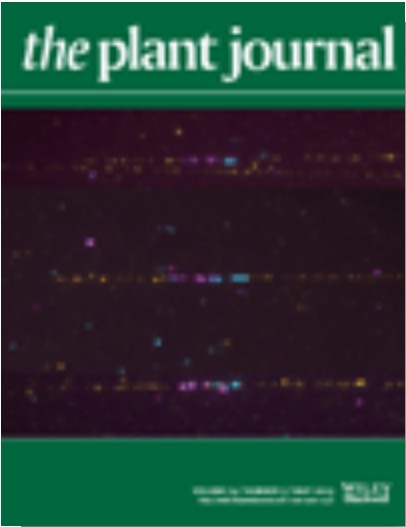- Submit a Protocol
- Receive Our Alerts
- Log in
- /
- Sign up
- My Bio Page
- Edit My Profile
- Change Password
- Log Out
- EN
- EN - English
- CN - 中文
- Protocols
- Articles and Issues
- For Authors
- About
- Become a Reviewer
- EN - English
- CN - 中文
- Home
- Protocols
- Articles and Issues
- For Authors
- About
- Become a Reviewer
In vitro Protein Ubiquitination Assays
Published: Vol 3, Iss 19, Oct 5, 2013 DOI: 10.21769/BioProtoc.928 Views: 50329
Reviewed by: Tie Liu

Protocol Collections
Comprehensive collections of detailed, peer-reviewed protocols focusing on specific topics
Related protocols
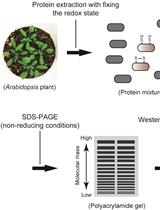
Simple Method to Determine Protein Redox State in Arabidopsis thaliana
Keisuke Yoshida and Toru Hisabori
Jun 5, 2019 7357 Views
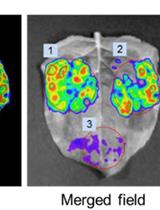
Split-luciferase Complementation Imaging Assay to Study Protein-protein Interactions in Nicotiana benthamiana
Liping Wang [...] Rosa Lozano-Durán
Dec 5, 2021 11672 Views
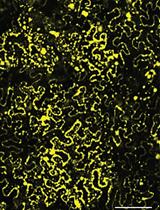
In vitro Auto- and Substrate-Ubiquitination Assays
Hye Lin Park [...] Gyeong Mee Yoon
Apr 5, 2022 3450 Views
Abstract
Ubiquitin can be added to substrate protein as a protein tag by the concerted actions of ubiquitin activating enzyme (E1), ubiquitin conjugating enzyme (E2) and ubiquitin protein ligase (E3). At the present of E1 and ubiquitin, E2 activity can be determined by the thio-ester formation. The E3 activity of a putative protein as well as the E2/E3 or E3/substrate specificities also can be explored by in vitro ubiquitination assay. The result can be detected by western blot with certain antibody. Purified proteins expressed from bacterial system are always used in this assay.
Keywords: UbiquitinationMaterials and Reagents
- Cell crude extract
- Purified protein or crude extract of ubiquitin activating enzyme (E1)
- Purified recombinant ubiquitin conjugating enzyme (E2) fused with a protein tag (such as 6x His tag)
- Purified recombinant ubiquitin ligase (E3)
- Purified ubiquitin or recombinant ubiquitin protein fused with a tag ( (Kraft et al., 2005; Liu et al., 2010 )
- ATP (Sigma-Aldrich, catalog number: A7699 )
- MgCl2 (Sigma-Aldrich, catalog number: V900020 )
- Anti-ubiquitin antibody or antibody of a certain protein tag
For example:
Anti-Ub, raised in our laboratory
Anti-His (Santa Cruz, catalog number: sc-0836 )
Nickel-HRP (KPL, Kirkegaard & Perry Laboratories, catalog number: 24-01-01 )
Anti-GST (Beijing Protein Innovation, catalog number: AbM59001-2H5-PU )
Anti-MBP (New England Biolabs, catalog number: E8030S ) - Amylose resin (New England Biolabs, catalog number: E8021 )
- DTT
- SDS-PAGE gel
- Tris
- PMSF
- Skimmed milk powder or BSA
- Chemiluminescent HRP substrate kit (EMD Millipore, catalog number: WBKLS0100 )
- Glycerol
- Bromophenol blue
- MBP (maltose binding protein) Column buffer (see Recipes)
- 20x reaction buffer (see Recipes)
- 4x SDS sample buffer with or without DTT (or β- mercaptoethanol) (see Recipes)
- 1x PBS (see Recipes)
Equipment
- Centrifuge
- Thermo-mixturer (Eppendorf Thermomixer comfort)
- Protein electrophoresis apparatus
- Western blot apparatus
Procedure
- DTT sensitive thio-ester assay of E2 protein
- The reaction is performed in total 30 μl, including 1.5 μl of 20x buffer, 50 ng of E1, 200-500 ng E2, and 2 μg ubiquitin.
- Incubate the reactions at 37 °C for 5 min.
- Split the reactions by adding 10 μl 4x SDS sample buffer with or without DTT (or β- mercaptoethanol).
- Boil the samples at 100 °C for 5 min.
- The reaction products are separated with 12% SDS-PAGE gel and detected by Western blotting with anti-ub antibody or antibody for certain tag fused with the E2 protein to detect the formation of DTT-sensitive thio-ester bonds.
- The sample proteins separated by 12% SDS-PAGE gel are electroblotted to nitrocellulose membrane at 100 V for 75 min.
- The membrane is blocked with 1x PBS containing 5% skimmed milk powder for 1 h at room temperature.
- The membrane was then incubated first with primary antibody (suggested dilution ratio: 1:5,000 for anti-Ub, 1:500 for anti-His, 1:500 for anti-MBP antiserum) then with secondary antibody diluted in 1x PBS containing 3% skimmed milk for 1 h at room temperature. Wash the membrane with 1x PBS for two times (15 min each) after it was incubated with the primary and secondary antibody. If detect His tagged protein with Nickel-HRP,just incubate the membrane with 1:15,000 dilution of Nickel-HRP in 1x PBS containing 1% BSA for 1 h, wash the membrane two times and then bands can be detected.
- Bands were detected with the Millipore chemiluminescent HRP substrate kit. (Figure 1)
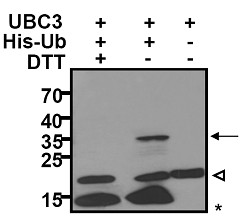
Figure 1. DTT sensitive thio-ester assay of His-UBC3 ((Kraft et al., 2005)). The reaction samples were detected with anti-His antibody. The arrows indicate the DTT-sensitive thioester linkage. The open triangles indicate bands of E2 protein itself that was not attached to Ub. Asterisks indicate His-tagged Ub.
- The sample proteins separated by 12% SDS-PAGE gel are electroblotted to nitrocellulose membrane at 100 V for 75 min.
- The reaction is performed in total 30 μl, including 1.5 μl of 20x buffer, 50 ng of E1, 200-500 ng E2, and 2 μg ubiquitin.
- Autoubiquitination assay of E3 protein
The E3 proteins can be purified in a 1.5-ml Eppendorf tube from cell crude extract just before use (recombinant MBP (Maltose binding protein)-E3 protein is used as an example below).- Vortex and thoroughly suspend the amylose beads.
- Aliquot 100 μl of bead suspension to a sterile microcentrifuge tube.
- Add 1 ml of MBP column buffer and resuspend the beads.
- Centrifuge at 400 x g for 2 min and decant supernatant. Repeat wash.
- Add 0.5-1 ml of crude extract (the total amount of the E3 protein should be 0.5-1 μg) to the tube containing the prewashed beads.
- Rotate at room temperature for 1 h (or 4 °C for 2 h).
- Wash the beads with 1 ml of 50 mM Tris–HCl (pH 7.5) for three times (like steps B3-4) and remove all the liquid of the final wash using very thin tips.
- Prepare the reactions in total 30 μl, including 1.5 μl of 20x reaction buffer, 50 ng of E1, 200–500 ng of E2, and 5 μg of ubiquitin. Add the reaction system to the tubes containing the amylose resin beads binding with MBP-E3 proteins.
- The reactions minus E1 and minus E2 respectively should be performed at the same time as control.
- Incubate the reactions at 30 °C for 1.5 h with agitation (900 rpm) in a thermomixer.
- Split the reactions by adding 10 μl 4x SDS sample buffer (with DTT or β- mercaptoethanol) and boil the samples at 100 °C for 5 min.
- The reaction products are separated with 8–12% SDS-PAGE gel and detected with anti-ubiquitin antibody or antibody for certain tag fused with ubiquitin or anti-MBP antibody by Western blotting. (see steps A5a-d) (Figure 2)
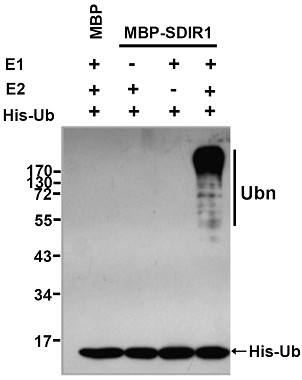
Figure 2. E3 ligase autoubiquitination activity of MBP-SDIR1 (Zhang et al., 2007).
MBP-SDIR1 was assayed for E3 activity in the presence of E1 (from wheat), E2 (UBCH5b) and 6x His tagged ubiquitin. Samples were resolved by 8% SDS-PAGE. The nickel–horseradish peroxidase (Nickel-HRP) was used to detect His tag ubiquitin.
Note: E2/E3 specificities could be explored using different E2 proteins combined with the same E3 in this assay.
- Incubate the reactions at 30 °C for 1.5 h with agitation (900 rpm) in a thermomixer.
- Vortex and thoroughly suspend the amylose beads.
- E3/substrate ubiquitination assay
The E3 and substrate protein should be fused with different tag (and the tag also should be different with the tag fused with E1, E2 and ubiquitin) and the recombinant proteins should be expressed and purified before use. The proteins also can be prepared via in vivo expression such as agroinfiltration in Nictotiana benthamiana.- Prepare the reactions in total 30 μl, including 1.5 μl of 20x reaction buffer, 50 ng of E1, 200 ng of E2, 200-500 ng E3, 500 ng substrate proteins and 5 μg of ubiquitin. The reactions minus E1, minus E2 (and minus E3) respectively should be performed at the same time as control.
- Incubate the reactions at 30 °C for 1.5 h.
- Split the reactions by adding 10 μl 4x SDS sample buffer (with DTT or β- mercaptoethanol) and boil the samples at 100 °C for 5 min.
- The reaction products are separated with 8–12% SDS-PAGE gel and detected with anti-ubiquitin antibody or antibody for certain tag fused with substrate protein by Western blotting. (see steps A5a-d) (Figure 3)
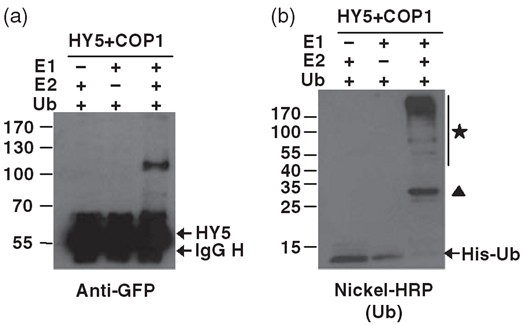
Figure 3. HY5-GFP (substrate protein) was ubiquitinated by Myc-COP1 (E3 ligase) (Zhao et al., 2013). HY5-GFP and Myc-COP1 were all expressed via agroinfiltration. Then, the cell lysates were mixed and immunoprecipitated with anti-Myc antibody. The immunoprecipitated product was applied for a further in vitro ubiquitination assay. E1 (from wheat), E2 (UBCH5b) and 6x His tagged Ubiquitin (Ub) were added to the reaction. ★represents the mixture of poly-ubiquitinated HY5-GFP and Myc-COP1. ▲means mono-ubiquitinated E2.
(a) The in vitro ubiquitination samples were detected by immunoblot with anti-GFP antibody.
(b) The in vitro ubiquitination samples were detected by immunoblot with Nickel-HRP (or anti-His antibody) to detect His-Ubiquitin.
Note: The E3 proteins can be purified in a 1.5-ml Eppendorf tube from cell crude extract just before use as steps B1-5. And then the following E3-substrate ubiquitination reactions should be performed with agitation (900 rpm) in a thermomixer.
- Prepare the reactions in total 30 μl, including 1.5 μl of 20x reaction buffer, 50 ng of E1, 200 ng of E2, 200-500 ng E3, 500 ng substrate proteins and 5 μg of ubiquitin. The reactions minus E1, minus E2 (and minus E3) respectively should be performed at the same time as control.
Recipes
- MBP column buffer
20 mM Tris-HCl (pH 7.4)
0.2 M NaCl
1 mM EDTA
Add 1 mM DTT and 1 mM PMSF before use - 20x reaction buffer
1 M Tris pH 7.5
40 mM ATP
100 mM MgCl2
40 mM DTT
Note: Aliquoted and stored at -20 °C. Take out an aliquot from -20 °C just before use and each aliquot can be used only once. - 4x SDS sample buffer
0.2 M Tris pH 6.8
8% SDS
40% glycerol
0.004% bromophenol blue
0.4 M DTT (or 20% β-mercaptoethanol)
The buffer without DTT or β-mercaptoethanol can be prepared according to this recipe - 1x PBS
137 mM NaCl
2.7 mM KCl
10 mM Na2HPO4
2 mM KH2PO4
Adjust to pH 7.4
Acknowledgments
This protocol was developed from the following published paper: Zhao et al. (2013). This work was supported by grants from the National Basic Research Program of China (973 Program) (2011CB915402) and the National Science Foundation of China (CNSF 31030047/90717006). Zhao QZ is supported by National Science Foundation of China grant CNSF 31200907.
References
- Kraft, E., Stone, S. L., Ma, L., Su, N., Gao, Y., Lau, O. S., Deng, X. W. and Callis, J. (2005). Genome analysis and functional characterization of the E2 and RING-type E3 ligase ubiquitination enzymes of Arabidopsis. Plant Physiol 139(4): 1597-1611.
- Liu, L., Zhang, Y., Tang, S., Zhao, Q.,Zhang, Z., Zhang, H., Li, D., Guo, H. and Xie, Q. (2010). An efficient system to detect protein ubiquitination by agroinfiltration in Nictotiana benthamiana. Plant J 61(1): 893-533.
- Zhang, Y., Yang, C., Li, Y., Zheng, N., Chen, H., Zhao, Q., Gao, T., Guo, H. and Xie, Q. (2007). SDIR1 is a RING finger E3 ligase that positively regulates stress-responsive abscisic acid signaling in Arabidopsis. Plant Cell 19(6): 1912-1929.
- Zhao, Q., Tian, M., Li, Q., Cui, F., Liu, L., Yin, B. and Xie, Q. (2013). A plant-specific in vitro ubiquitination analysis system. Plant J 74(3): 524-533.
Article Information
Copyright
© 2013 The Authors; exclusive licensee Bio-protocol LLC.
How to cite
Zhao, Q. and Xie, Q. (2013). In vitro Protein Ubiquitination Assays. Bio-protocol 3(19): e928. DOI: 10.21769/BioProtoc.928.
Category
Plant Science > Plant biochemistry > Protein > Modification
Biochemistry > Protein > Activity
Biochemistry > Protein > Interaction > Protein-protein interaction
Do you have any questions about this protocol?
Post your question to gather feedback from the community. We will also invite the authors of this article to respond.
Share
Bluesky
X
Copy link



